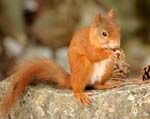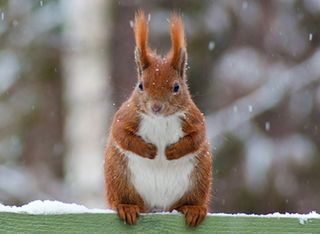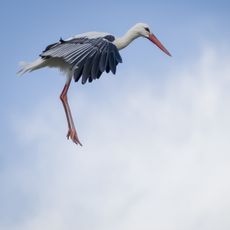Red squirrels fight back after more than 100 years of decline
Strategic grey squirrel control to thank for rise of red squirrel


Once forced to live in tiny pockets of the North of England, red squirrels are finding new homes in the UK.

A study by the Red Squirrels Northern England (RSNE) conservation partnership reveals red squirrel distribution has increased by 7% since 2012.
The native rodent has been fighting extinction since 1876 when North American grey squirrels were introduced to the UK. The foreign squirrels carry a pox virus which spreads quickly among populations and is deadly to reds.
Volunteers for the RSNE spent three-month periods during spring 2012, autumn 2012 and spring 2013 observing squirrel breed populations in 300 areas.
As well as revealing an increase in the amount of countryside occupied by red squirrels, their results also show a 17% decrease in the distribution of grey squirrels.
It's the best news for red squirrels in more than 100 years. They've even been spotted in Ambleside, Cumbria for the first time in a decade.

The organisation says reds are flourishing because of careful grey squirrel control. Teams of professional rangers, gamekeepers and volunteers have been trapping and shooting the greys since January 2012. It's also thought that last year's poor weather has had an averse effect on grey squirrel populations.
Sign up for the Country Life Newsletter
Exquisite houses, the beauty of Nature, and how to get the most from your life, straight to your inbox.
'It's still early days, but it's really encouraging to have goodish news to report after a century of doom and gloom for red squirrels,' says Nick Mason, RSNE project manager.
The squirrel study is still ongoing and Nick is calling for wildlife fans to share reports of their squirrel sightings on the RSNE website and to get involved with their local red squirrel group.
'The project's success is thanks to the support of Biffa and our committed volunteers,' he says.
'Ideally we'd like that community to grow.'
* Favourite animals: Red squirrels
Country Life is unlike any other magazine: the only glossy weekly on the newsstand and the only magazine that has been guest-edited by HRH The King not once, but twice. It is a celebration of modern rural life and all its diverse joys and pleasures — that was first published in Queen Victoria's Diamond Jubilee year. Our eclectic mixture of witty and informative content — from the most up-to-date property news and commentary and a coveted glimpse inside some of the UK's best houses and gardens, to gardening, the arts and interior design, written by experts in their field — still cannot be found in print or online, anywhere else.
-
 A well-connected rural playground with 23 acres on the edge of the South Downs National Park
A well-connected rural playground with 23 acres on the edge of the South Downs National ParkOld House Farm is an impressive family home with a wealth of amenities that would inspire any rural passion.
By Arabella Youens Published
-
 The UK gets its first ‘European stork village’ — and it's in West Sussex
The UK gets its first ‘European stork village’ — and it's in West SussexAlthough the mortality rate among white storks can be up to 90%, the future looks rosy for breeding pairs in southern England.
By Rosie Paterson Published
